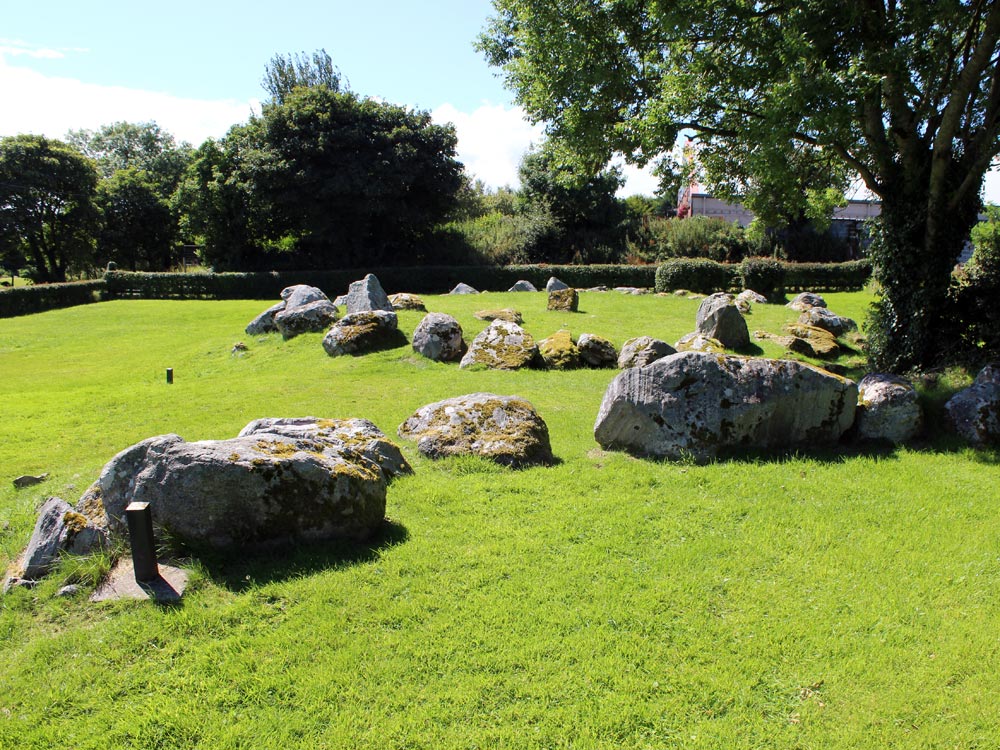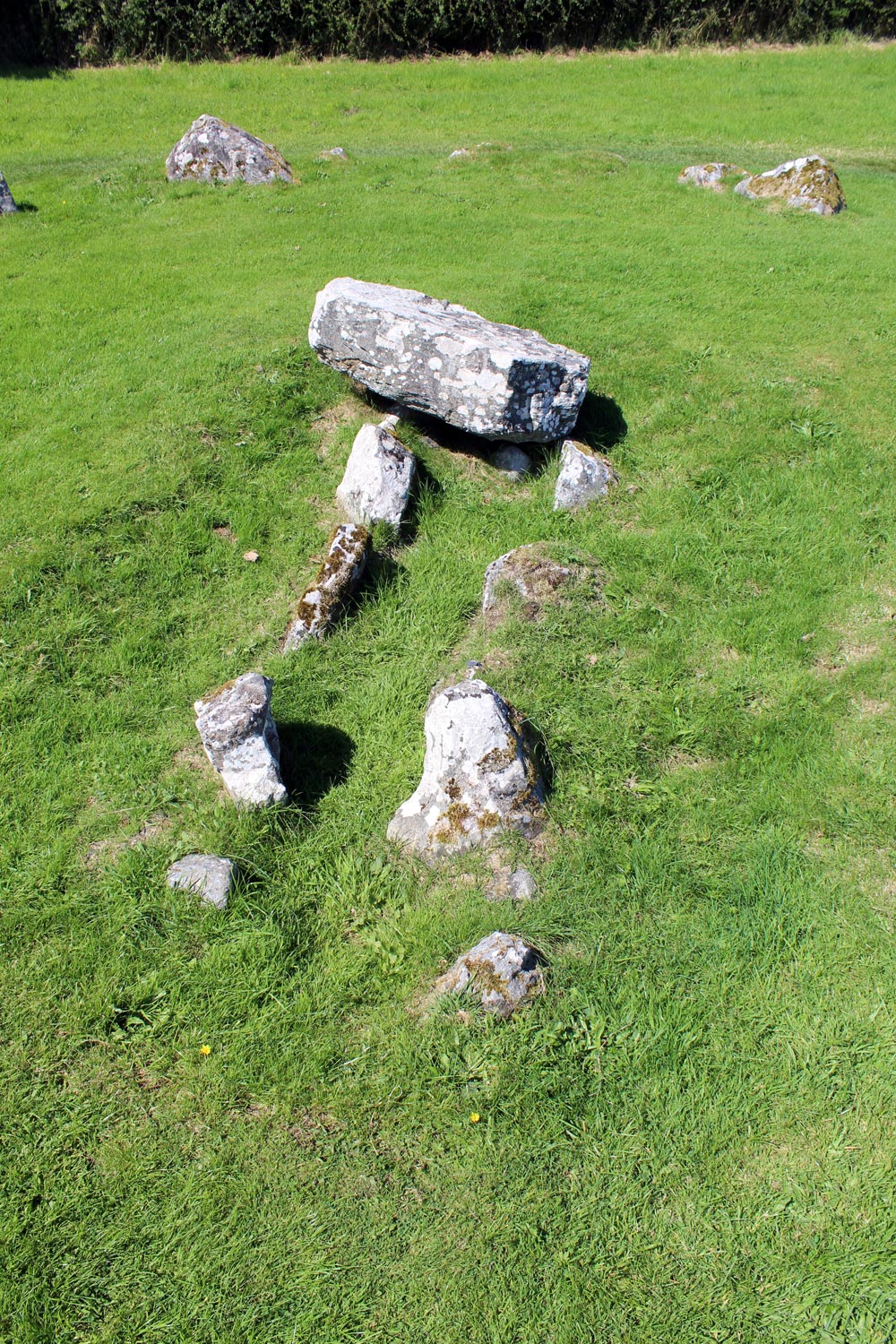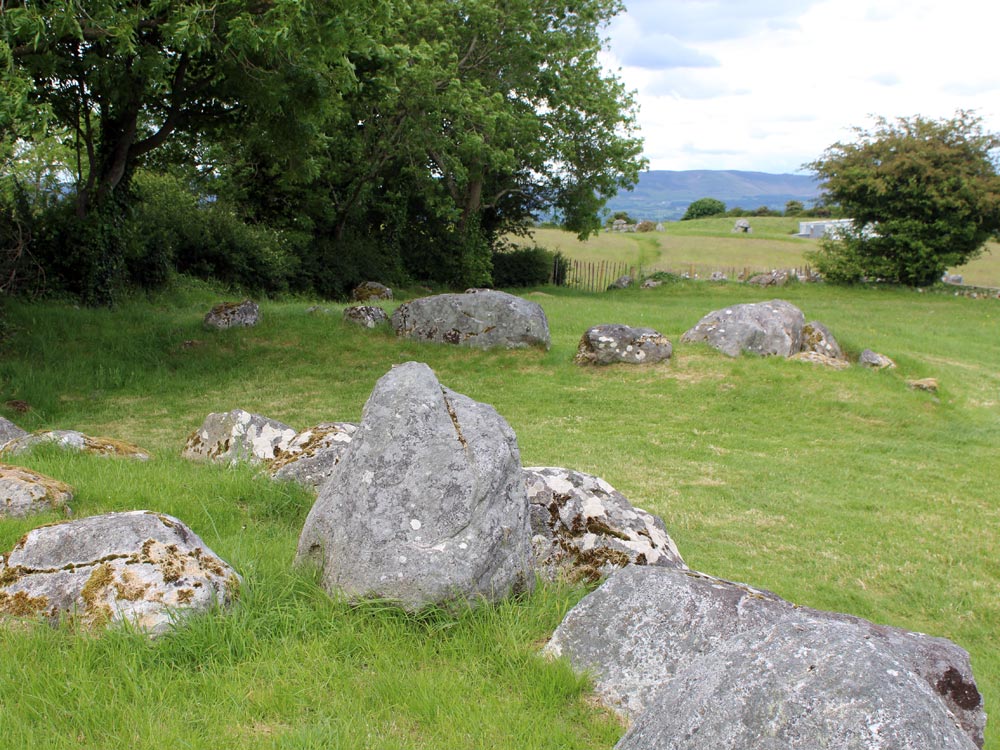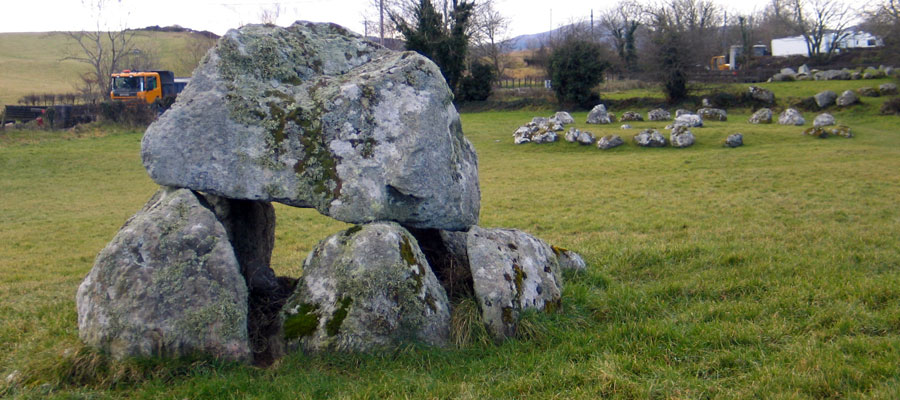Circle 2
Not much is left of Circle 2. A number of scattered stones beside Circle 1 look vaguely like the broken remains of a circle about sixteen meters in diameter. The confusion of large boulders here has led to differing opinions as to the numbering of the Carrowmore sites, first arising when Wood-Martin began to use a differing numbering system to Petrie. Early reports state that human bones were found here. The monument, which was surely dug by Roger Walker, has not been excavated in modern times. It is reported that bones were found here.

A number of the boulders from this monument can be seen in the field wall along the Seafield road. The monument was probably damaged between 1830 and 1837, when new tenants were introduced onto the land on the death of British monarchs. The resulting enclosure laws saw many walls built in Carrowmore and the beginnings of gravel quarrying.

Borlase's report, 1895
Borlase in his epic book, The Dolmens of Ireland, published in 1897, gathered all known materials on neolithic monuments. In the case of Carrowmore, this mostly consists of comments by George Petrie in 1837 and William Gregory Wood-Martin in the 1880's. Roger Walker, who is known to have dug in many of the circles, left no written record of his activities.
It is fifty-two feet in diameter. The stones are of great size, but the greater number of them have been removed to an adjoining wall. Human bones have also been discovered within this circle.
- George Petrie, 1837.
Traces of this monument have almost entirely disappeared.
- William Gregory Wood-Martin.

The owner of the field in which the two last circles are situated recollects to have seen five large upright stones in a group at a distance of about forty feet to the southeast of the second circle, and which were removed to form the wall along the roadside, which is chiefly composed of such large stones. These were unquestionably the upright supporters of the cromleac of another circle.
- George Petrie, 1837.
Though the monument has been largely destroyed there can be no doubt that Circle 2 would have been a typical tertre or early free-standing passage-grave supported by a platform within a ring or circle of glacial erratics. Some of the stones remaining here are quite massive. The monuments here were damaged when the road was built connecting Seafield to Sligo Town.


